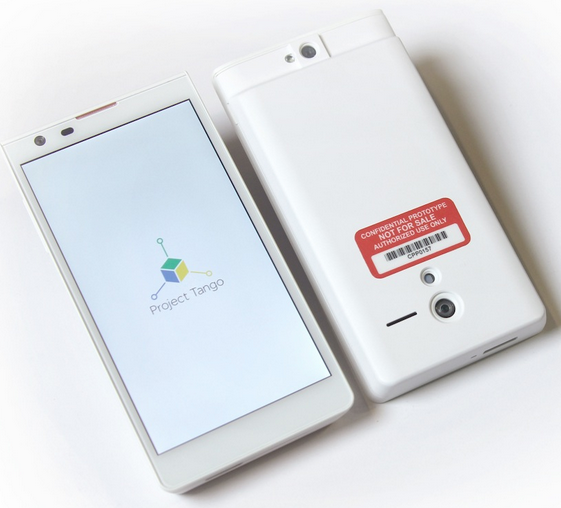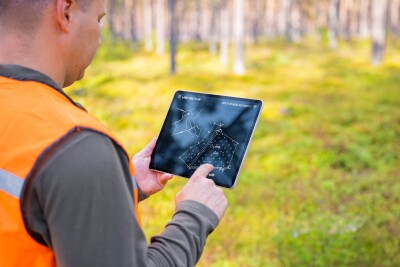Prototype Android captures data, renders 3D model of user’s environment in real time
Google on Thursday unveiled a prototype Android smartphone that senses 3D motion and geometry using robotics and vision-processing technology for indoor mapping and navigation, gaming, and healthcare applications.
The project’s prototype phone (left) is called Project Tango, run by Google’s Advanced Technology and Projects (ATAP) group. The phone has customized sensors and software “designed to track the full 3D motion of the device, while simultaneously creating a map of the environment” on a five-inch display, the Mountain View, Calif., tech giant said on the Project Tango website.
The phone’s sensors make over 250,000 3D measurements every second, updating its position and orientation in real-time, then combining the captured data into a 3D model of the user’s environment.
“What if you could capture the dimensions of your home simply by walking around with your phone before you went furniture shopping?” Google said on its Project Tango web page. “Imagine playing hide-and-seek in your house with your favorite game character, or transforming the hallways into a tree-lined path.”
Calling it “a focused exploration of what might be possible in a mobile platform,” Project Tango leader Johnny Lee said the goal of the project is “to give mobile devices a human-scale understanding of space and motion.”
The prototype contains the Myriad 1 vision processor platform from Movidius Ltd., a developer of vision processing platforms for mobile and portable devices. The Myriad 1 has ultra-low power computational chips, software and development tools that let mobile devices “intelligently understand and contextualize their surroundings,” said Movidius CEO Remi El-Ouazzane in a statement.
“Google has paved the future direction for smart mobile vision systems and we’re excited to be working with a company that shares our vision to usher in the next wave of applications that fundamentally alter how a mobile device is used to experience the world around us,” said El-Ouazzane.
Google has just 200 prototype SDKs rolling out March 14 for developers to write applications. The SDKs contain tools such as APIs for positioning, orientation, and depth data to standard Android applications written in Java, C/C++, and the Unity Game Engine.
Some of those have already been allocated to developers to write applications for “indoor navigation/mapping, single/multiplayer games that use physical space, and new algorithms for processing sensor data,” the company said. Developers can apply for one on the Project Tango website.
“We want partners who will push the technology forward and build great user experiences on top of this platform,” he said. “Tell us what you would build. Be creative. Be specific. Be bold.”






